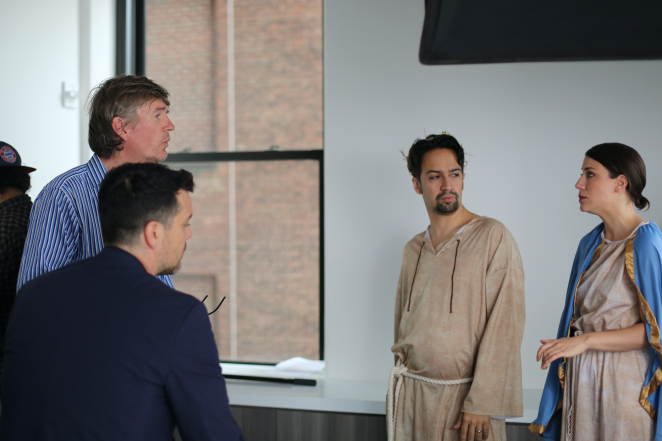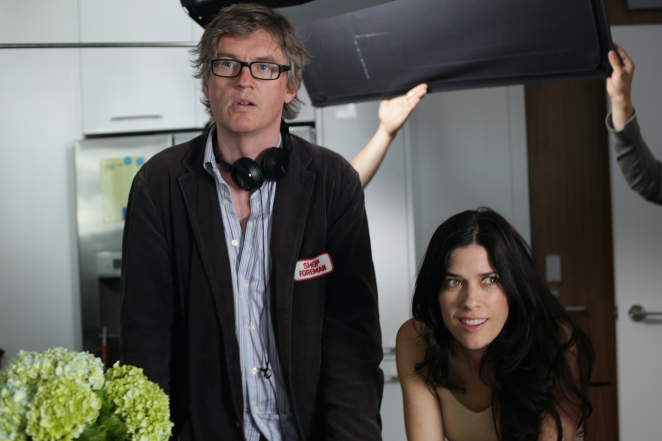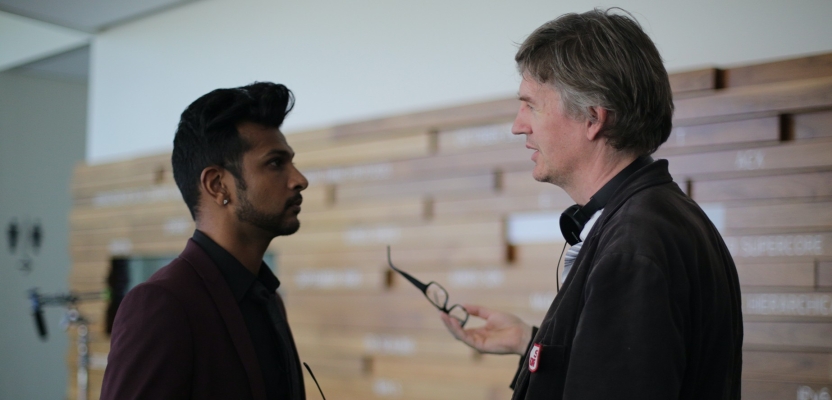How did you get into the industry?
I was living the dream of being an indie filmmaker in New York—in other words, struggling to pay the rent and eating a lot of iffy cheeseburgers—when a friend hooked me up with a gig at a SoHo ad agency. That’s how I discovered that advertising was actually a magical refuge for creatives—musicians, actors, illustrators—all earning good money while pursuing their art on the side.
I started as a studio artist, creating storyboards and mock-ups, moved up to copywriter, and eventually, creative director. Online video was just coming into its own and I engaged my filmmaking skills on a lot of short-form content that we created in-house. It wasn’t until I went freelance that I managed to make the leap to directing commercials, and to be honest, it was more dumb luck than anything.
I had been writing scripts for a production company when one of their producers—who knew of my filmmaking background from various conversations—asked if I’d be interested in directing the script I was working on at the time. Interestingly, that project was cancelled, but he kept his word and hired me to direct the next one—so I owe him a lot because it was a big opportunity.
Where are you based now and who do you work for?
I’m based in San Francisco. It’s not an ideal location for a directing career, but it’s a great place to live, which was my priority when our kids were young. My clients are mostly in tech and have included Adobe, Cisco, Logitech, Western Digital, NetApp and Five9.

Still, most of the commercial work goes south to Los Angeles, so this year I’m making a concerted effort to grow my network outside the Bay Area. I really need to challenge myself with new clients and industries. I’d actually love to shoot something in London—I have a lot of family there and I hardly ever see them.
If you weren’t in your current industry, what would you be doing?
I’d love to do another streaming series. I love shooting ads, but narrative is more engaging, personal, and fulfilling—especially when you’re telling a personal story. I’ve actually been developing a new show, but 2023 was horrible for pitching, so I’m hoping 2024 will open new doors.
That said, if I threw it all to the curb, I would open a bakery in a lovely small town somewhere. I know, I know, everyone became a baker during the pandemic, but I make some fierce loaves, good food makes me happy, and the world is still full of horrible bread.
Can you explain your creative process? What makes it unique?
On most commercials, ad agencies develop the strategy, pitch the concepts and write the script—only then does the director come on board to bring that script to life. I’m always happy to work that way, but I have also carved out a niche where I come aboard to essentially replace the ad agency, working directly with clients and production companies to develop, write and direct a project.
The reasons for this are myriad—the agency “doesn’t have the bandwidth”, the timeframe is “tight”, the budget is “not where we wish it was”—but at the end of the day, I still need to deliver high-quality work. It’s often an exhilarating, creative and highly collaborative process that requires me to wear a lot of hats— strategist, copywriter, director, with a bit of psychologist thrown in for good measure. I do a ton of prep work, starting with animatic storyboards that I draw and build myself to work out shots and timing.
I work with my DP and gaffer to create camera set-up and lighting diagrams based on the physical space, and then work with our producers to create a smart shooting schedule that affords us the most creative latitude possible. Funny enough, all that discipline actually translates into a set that is always light and joyous—which is super important for getting the best performance from your actors and crew. I’m often told that my sets are the most fun to be on.
How would you describe your style?
I don’t have a signature visual style, but I love shooting dialogue and humor and through that I’ve developed framing and blocking traits that appear throughout my work. The truth is, unless you’re lucky enough to consistently work with big budgets—I’m looking at you, Wes Anderson—it’s impossible to consistently deliver a whiz-bang signature look. Instead, I craft the look of each spot based on how best I can tell the story without breaking the budget.

A good example of making those kinds of adjustments is the Ernst & Young spot, Bad Apples. Normally, I shoot with wider lenses for their sense of presence and exaggerated movement, which is particularly good for dialogue and comedic action. Bad Apples has dialogue, but the tone is very different—this is a spot about corporate maleficence, so I shot it on a long lens to create a sense of tension and obfuscation around a company’s boardroom table. I think the final product is very effective.
Which individuals do you gain inspiration from? Do you have any heroes in the industry?
I can’t point to any single director, but I do love watching directors reels, especially from collectives like The Director’s Bureau and CANADA. More often than not, I’m left entertained, inspired, and a bit jealous that I didn’t get to do that.
What tips would you give to aspiring creatives looking for work?
Always say “yes”—especially if it’s fear that’s nudging you towards “no”. I am haunted by the opportunities I missed because I worried I wasn’t up to the task. These days, I lean into adversity and look for opportunities to be pulled out of my comfort zone—that’s where great things happen.
What tips would you give to other professionals to get more clients?
Ha ha. This is the question I ask everyone else. Always follow a lead, no matter how soft it might seem—we only need the door to crack open a bit to get our foot in and make an impression.
Short of an intro, never be afraid to reach out to a client you truly believe could use your skills and talent—the worst you’ll get out of it is a pleasant conversation. Ultimately, good work begets more work, so keep your portfolio up to date with your best creative and share it with anyone who’ll give you a moment.
What kind of tools/kit/software could you not do without?
It’s my 5 P’s. Pencil. Paper. (Adobe) Photoshop and Premiere. (Apple) Pages. With those, I can write and storyboard whatever you need.
What’s your secret to staying inspired and motivated?
The relentless passage of time and the nagging feeling that I have yet to reach my potential.
What’s the work achievement you’re most proud of?
My streaming series Bartlett. It’s the most complex, expensive, and personal thing I’ve ever done. It actually started life as a play based on my time in advertising. After a sold out run at the prestigious Central Works Theatre in Berkeley, I realized I had a solid foundation on which to build a TV show, which was always my dream. I rewrote the main character for the performer Anthony Veneziale, who I had worked with in the past and whose star was rising.

Anthony, in turn, brought on some amazing talent including Lin-Manuel Miranda and Utkarsh Ambudkar and before we knew it, we were off to the races. It was an all-consuming experience, but I can honestly say that I was never happier professionally than when I was making Bartlett. Best of all, I can point to it and say, if you want to know what I’m about, just watch the show.
What is the one thing that you would change about the industry?
I wish that every client in a position to approve a commercial—or a print ad, or a billboard, or whatever—finds the courage, even if it’s just one time, to take a big huge creative risk.
Any websites, books or resources you would recommend?
The book series Master Shots by Christopher Kenworthy (there are 3 volumes) is a fantastic compendium of camera shots and movements organized into narrative buckets like dramatic shift, revelations and conflict.
I reference it constantly, as I do Tony Zhou’s YouTube series, Every Painting A Frame. His video essays on how Edgar Wright shoots comedy or Spielberg’s love of long takes are as entertaining as they are instructive.




